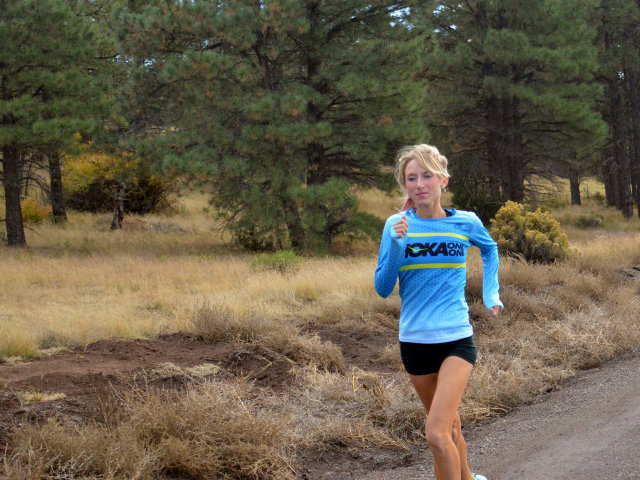After weathering criticism for shutting down the Cellcom Green Bay Marathon in mid-race, Sean Ryan has advice for the organizers of the Madison Marathon facing similar hot conditions this weekend: Call it early.
The organizers of the run in Madison took heed, and announced Friday that the full marathon has been canceled due to a forecast for temperatures in the 90s. All registered runners will be allowed to run the half marathon, and organizers extended the time cut off for the 13.1-mile race to 11:30 a.m., more than four hours after the start.
It's a rare preventive measure, based both on the forecast and past experience.
Yet Ryan learned last Sunday that it's nearly impossible to stop single-minded endurance athletes in their quest to the finish line, risking their health and their lives.
Although Ryan shut-down the Green Bay marathon – 2 1/2 hours after the start – dozens of runners ran around barricades, and ignored volunteers and law enforcement; a similar scene played out during the heat-stricken 2007 Chicago Marathon.
"To try to halt an event mid-stream is a bit of a foolish proposition," Ryan said.
As of Thursday, 1,700 runners were registered for the marathon, and roughly 4,300 for the half in the 17th annual race. They paid $75 to $110 for their entries.
"This was an incredibly thought-out decision to make," said Rita Kellliher, president of Madison Festivals Inc., the event sponsor. "It's heart-breaking for all of us and we understand the runners' investment of training, fees and travel expenses."
Canceling a marathon days before its scheduled start would be a rare act in endurance sports, but one based on a growing body of research and the traumatic experiences of runners and race organizers in recent years.
In 2007, more than 300 participants in the Chicago Marathon required medical attention, 49 were hospitalized and one died, despite organizers' efforts to stop the race after 3 ½ hours.
In 2006 and 2010, the Madison Marathon was stopped in mid-race, after the press of athletes suffering dehydration and heat exhaustion overwhelmed medical workers at the finish line and on the course.
In Green Bay, more than 20 runners were transported to area hospitals and more than 120 required medical attention on the course. Ryan stopped the clocks and had volunteers direct runners to stop when his medical director reported the staff was overwhelmed and described the situation as "out of control." Ambulances were called from two surrounding counties to augment those already in use.
The 2012 Boston Marathon and the 2011 Summerfest Rock 'n Sole also ended with stricken runners exhausting the medical support.
Bill Roberts, medical director of the Medtronic Twin Cities Marathon for three decades, has studied mass casualty marathons and developed best-practices for race directors around the world.
"My personal view is that it's better not to start the race, because people don't quit and everybody has mixed messages," Roberts said.
"I think races need to look at what they can handle and what's their appetite for people ending up in the hospital. Are they willing to say it's OK for 20 to 30 people ending up in the hospital. When do you run out of ambulances and that kind of stuff."
The decision-making needs to take into account more than the threat to individual runners, but a community's emergency medical capacity.
During the 2007 Twin Cities Marathon, the crush of people needing treatment at hospitals closed the emergency rooms in six hospitals.
"We can't have that," Roberts said.
Similarly, Madison Marathon Race Director Keith Roberts takes a broad view: "We never want to tax the system so much that we are tying up many of the city resources, so when Mrs. Smith in Maple Bluff has a heart attack, they have to bring in an ambulance from another community."
In a paper he wrote for the American College of Sports Medicine, Roberts advised that marathons not start if a measure of temperature, humidity and dew point exceeds 69 degrees Fahrenheit. In that calculation, humidity plays a larger role than temperature.
The risk of heat exhaustion, brain swelling and seizures rises sharply with a combined measure of 55.4 degrees, Roberts reported. For every 1,000 participants, organizers can expect 100 to 120 runners needing medical help, a mass casualty incident, according to Roberts.
Canceling a marathon, or stopping one in mid-race, is anathema to the underpinnings of endurance sports. Participants build their bodies and their minds to tough it out, never back down, never retire from their pursuit.
In addition, marathons and similar endurance events have strict no-refund policies, although some, including the Boston Marathon, allowed entries to transfer to the next year.
"My take-away ... endurance athletes are not capable of making rational decisions about whether an event should proceed or halt, or in some cases, make a rational decision whether they should proceed or stop," Ryan said, after reflecting for several days on the Green Bay Marathon fall-out.
"There's a real lack of perspective on the part of athletes," he said, noting that he's one of them.
That always-persevere mind-set compounds the difficulty in closing a race course filled with thousands of runners spread over miles.
Ryan and Peterson both have been criticized by runners who complained the message from race officials was confusing. The timing mats were left on, to allow organizers and friends and family to track runners, but the clocks were stopped and official times were not recorded after the closure point.
To get the message out, Madison has adopted a flag system: green for OK, yellow for caution, red for stopped and black for an extreme emergency.
Key to that is a plan for volunteers to follow under each of those conditions, and to direct runners in a consistent fashion.
"You need to be using every bit of your infrastructure in place to encourage runners to stop," said Phil Stewart, president of Road Race Management Inc., an organization with 350 race director members.
In any event, stopping myopic runners will be a challenge.
"I don't think you're going to use physical force, or you're going to have assault charges," Stewart said.
"It is a delicate thing, and I think what you are making as clear to the runners as possible is that the race is closed," he said. "That shifts the burden of responsibility, in some ways, off the race director and onto the runner."
That burden on the race director, however, will never be completely lifted.
"I'd rather disappoint thousands of runners than deal with the heartache of allowing it to go forward and costing someone their life," Ryan said.
He has no regrets about his decision on Sunday, except that he didn't make it 12 hours sooner, before the race started.
Memories of running cross-country for the Slinger Owls motivated Tom Held to get his body moving again when he turned 30. Almost two decades later, he's still on the move. The 49-year-old bikes, runs and skis, and covers news for similarly active people as a freelance writer and blogger.
He spent 26 years as a daily news reporter, and applies that experience to dig out stories about athletes, races, endurance sports, fitness and self-propelled transportation. His work has appeared in Silent Sports Magazine, Wisconsin Trails and Cross-Country Skier.
Held lives in the Bay View neighborhood, where he counts being Dad to twin daughters part of his daily workout.







